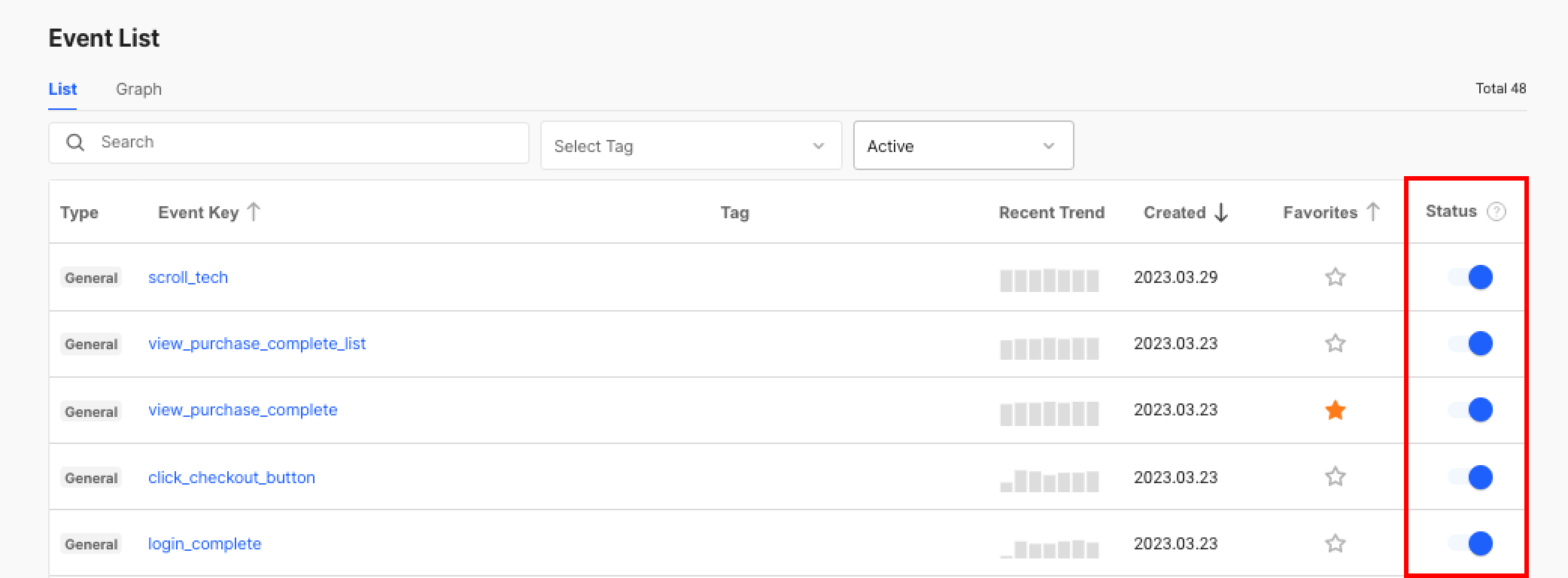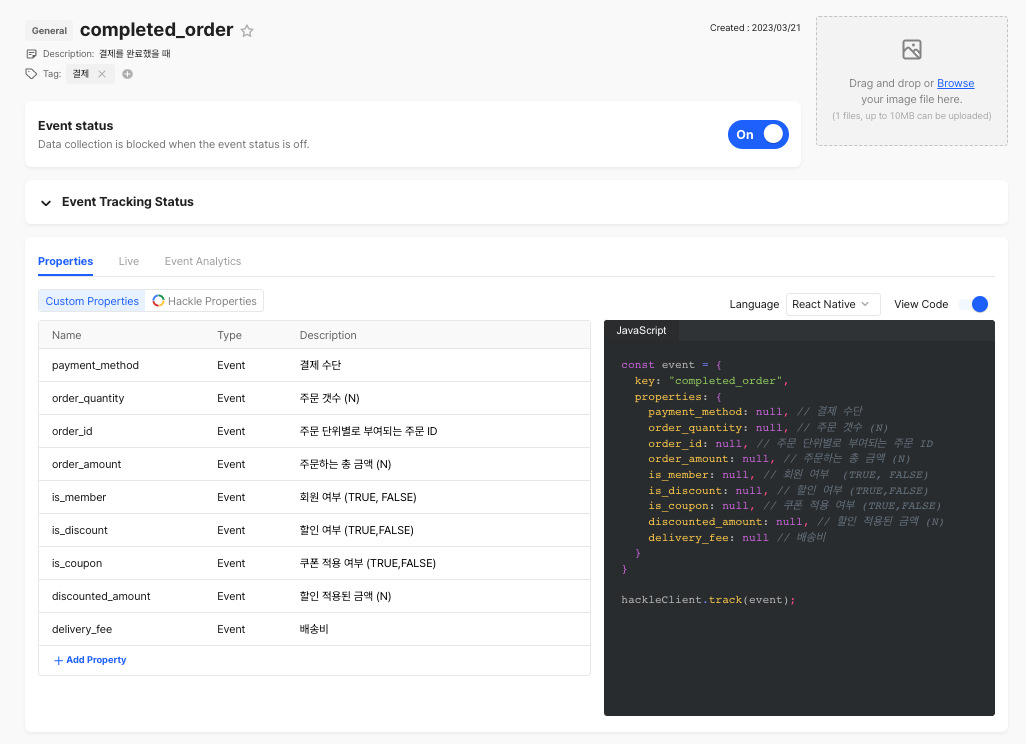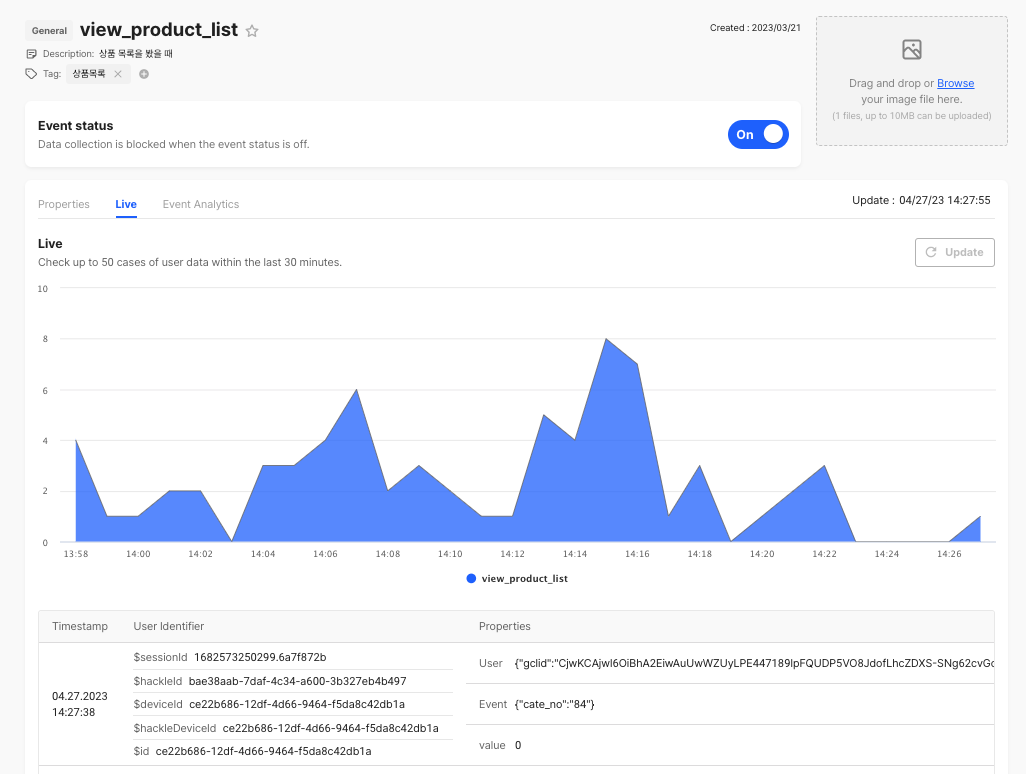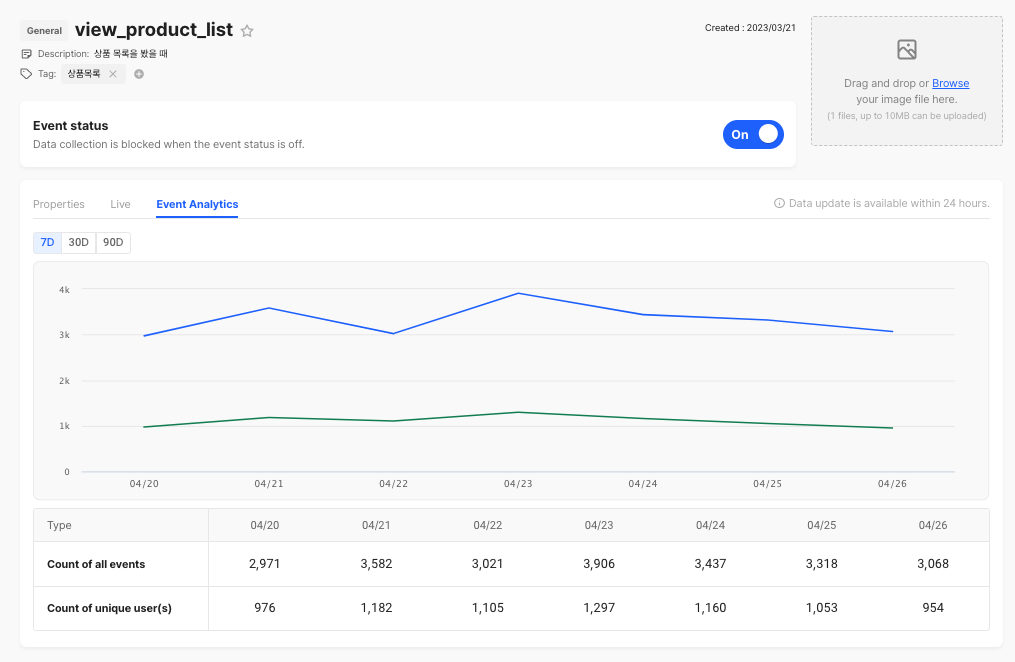What is an Event?
What is an event?
According to the dictionary, an event means a thing that has happened.
In the context of A/B testing, an event is an action that a user takes while using a website, mobile application, or system. If we want to be even more specific, an event can also be described as something that occurs due to an action. In other words, events are how you track the specific actions of a user. User actions include clicking the search button, entering into a product page, and completing a purchase. Other events also include non-user-induced events on your website, app, or system such as purchase order loading time, server API processing time, and the number of times a mobile application crashes.
Once you define a unique event to track a certain action in Hackle and link your platform with the provided SDK of your platform language, you will be able to collect the history of the specific event occurrence. When the action corresponding to the event occurs, Hackle records that the event has occurred, and the recorded event can be used for several purposes.
In the case of Hackle A/B Testing, events are required to do the following:
- Calculate the metrics of the different test groups in A/B testing
- Conduct funnel analysis
- Conduct data analytics
Event list
If you click the Event Management menu on the left side of the dashboard and then click list, you will be able to find the full list of your product's events below.

Here's what you can do in the event list:
- View event list
- Creating a new event
- Export event data
- Enable/Disable events
- View events by event status
- See by Event Status
- Check the Recent Collection Trend
- Favorites
- Search by Event Name
Creating a new event
Please refer to the Create Events document.
Activate/Deactivate an event
You can change the event status by using the toggle button on the far right column of each event.

If you deactivate an event, it cannot be used in any of the future A/B testings or user funnel analysis. Double check whether or not the event is not necessary and should be disabled.
View events by event status
If you click the drop-down menu at the top left of the event list, you can see three options: View All / Active Events / Inactive Events.

- View All: You can see the list of all events in the system.
- Active Events: You can only view events with an event status of Active.
- Inactive Events: You can only view events with an event status of Inactive.
Event details
Click a specific event key in the event list to view more detailed information of the event. The example below is the detailed screen of the event key called view_checkout.

The following details of the event are provided
- Event key
- Event description
- Event status
- Properties collected with the event (property name, type and description)
- Real-time Event transmission/recording status in the last 30 minutes
- Event Analytics
Event status
Indicates whether this event is currently active or inactive.
As in the list, you can use the toggle button to toggle between active or inactive state.
Event Image
If you have an event that is quite hard to konw with just event name or description, you can upload image by drag and drop on the image section. Captured Image help your team to know when and where the event occurs. also when you hover your mouse over the event image area, you can enlarge and delete it, and you can edit it at any time. However, you can only upload one image file (jpg, png) of 10MB or less.
Event transmission status in the last 30 minutes
If the corresponding event key has been sent to Hackle in the last 30 minutes, it shows the number of transmissions as a line graph. This graph refreshes every 30 seconds.
Through this live graph, you can see whether the event is being sent out to the platform and recording/operating normally.
Log of all events triggered/sent within the last 30 minutes
You can check the occurrence time, user identifier, user property and event property information of the event sent to Hackle in the last 30 minutes by clicking on Live.
Please check the environment since event logs are calculated separately for each of the development and production environments.

Event analysis
If you select the data query period (last 7 days/30 days/90 days) and data query type (count/sum of values/conversion rate/average number count/average value), you can check the aggregated event data results that meet the selected conditions.

Updated 4 months ago
